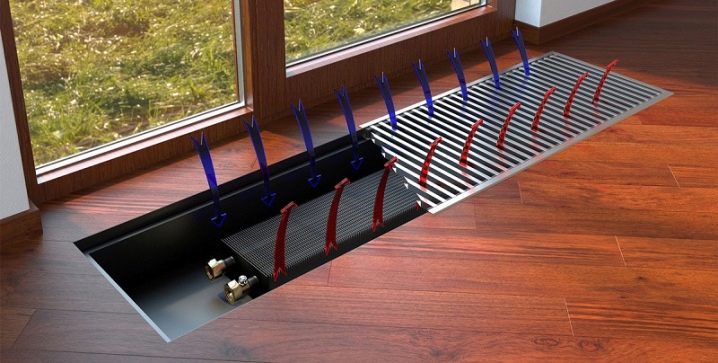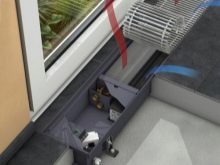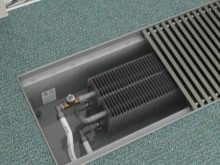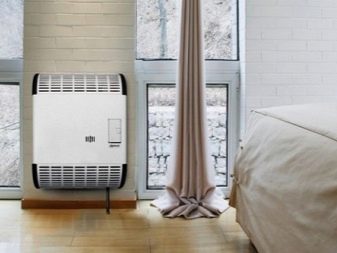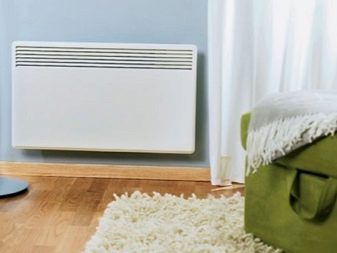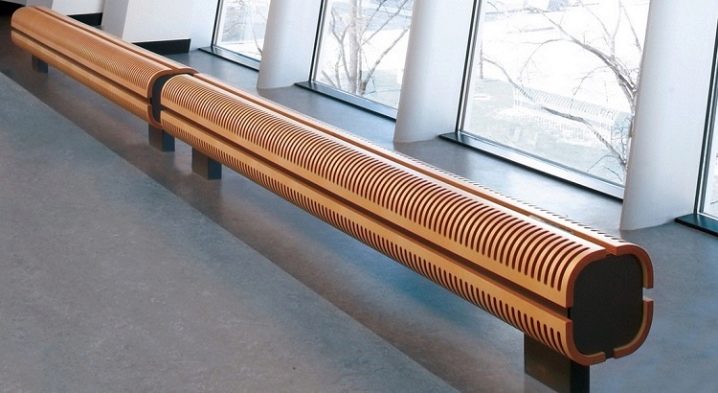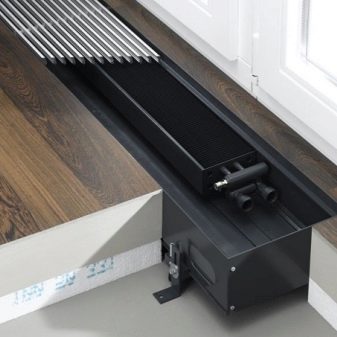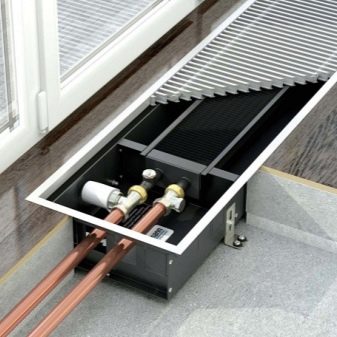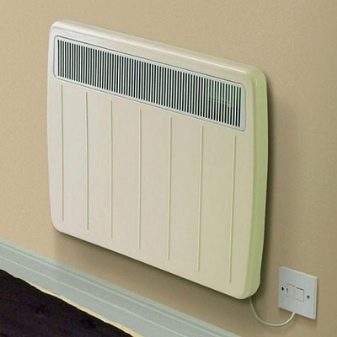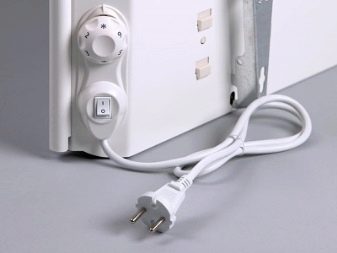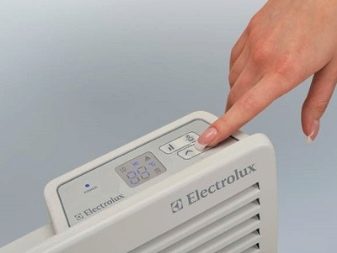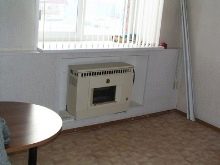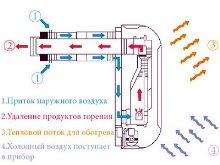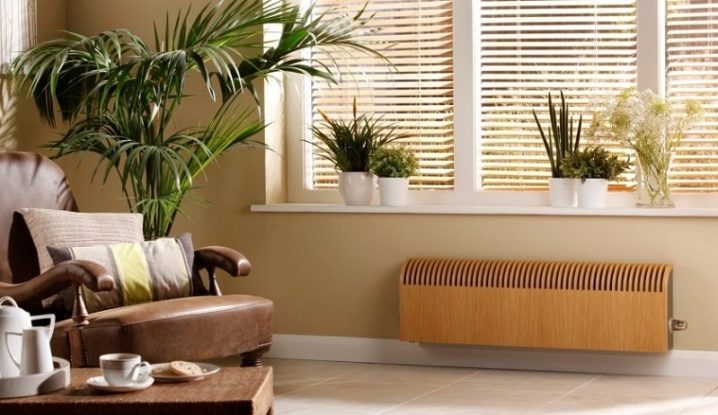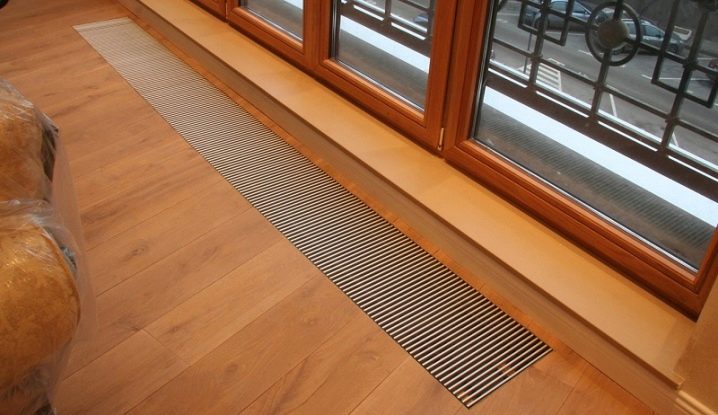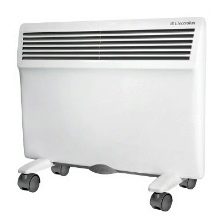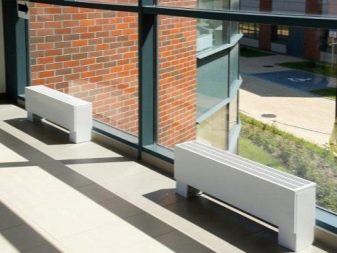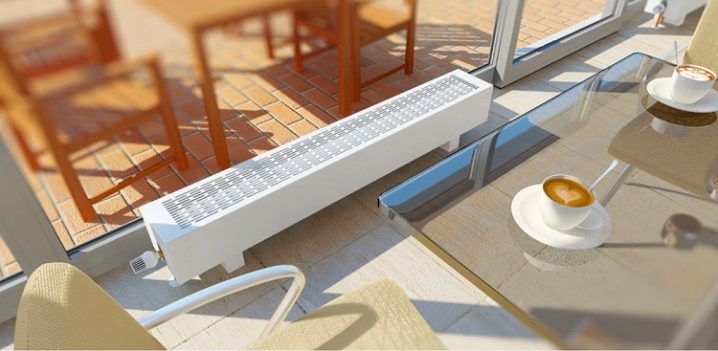Convector batteries: types and uses
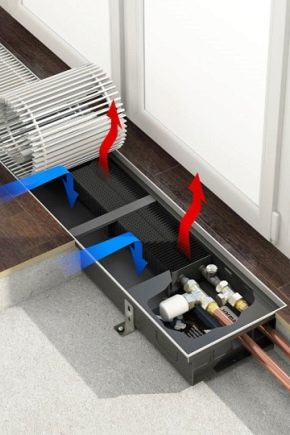
The quality of home heating depends not only on the choice of fuel, automation, boilers, thermostats, insulation and pipes. The last section of the heating line, that is, radiators, is in fact no less important. It is useful to understand what are the main properties of convector systems.
What is it and how does it work?
Strictly speaking, a convector is not a radiator in the usual sense of the word. Its most important feature is that it is not necessary to stretch the pipes and install specialized water boilers. And also there is no need for drafting sophisticated projects. But the difference is not only in this, but above all in the very physical essence of the working process.To heat the house, the natural movement of hot air is used up and cold, respectively, down.
Because systems are simple and efficient.
Everything looks really uncomplicated:
- there is a heater;
- this heater is placed inside the steel case;
- passing through the holes in the housing and touching the edges of the heater, the air gets warm;
- the heated mass rises to the ceiling, it is immediately replaced by a new one (that is, when the heater is operating, the circulation goes continuously - and no pumps are needed).
In addition to the grille, through which the heated stream passes, a kind of blinds are sometimes used. They help regulate its movement and weaken or strengthen the heating. Radiation accounts for 10% of the energy released to the outside, all the rest of the heat leaves the body due to the convection effect. Almost all commercially available convectors now heat the air at the expense of electrical energy.
But you can also buy devices that run on natural gas.
Species
Even a general presentation of the scheme of operation of convector heaters shows that they can be quite different in performance, which, respectively, have different qualities.
Device
The variety of species with closer acquaintance only becomes more apparent. In simple terms, batteries differ from simple convectors even more dramatically. They do not have any buildings, and yet it is quite a convector system, only water heating.
Important: do not judge by external similarity or dissimilarity, the external appearance actually says little about the method used to extract energy.
Water convector batteries - a classic type, it means all the same pipes and any boiler. In the presence of natural gas in the house, they are also relevant, since heating the water in this way minimizes costs. Moreover, there is not much difference between the use of natural and liquefied gas. Heating water in convector batteries using diesel boilers is somewhat less economical, but they have their own advantages, which must be taken into account. Sometimes they use solid fuel boilers that consume procured on their own or purchased from suppliers of fuel.
It must be remembered that compared to electric radiators of a convector type, water batteries are more difficult to mount.They manifest themselves much better, however, if it is necessary to warm houses of a large area, as well as rooms divided into many rooms. But to simplify the work where there is not much space, electric batteries of the convector type will be useful.
Installing them is fairly easy:
- brackets are attached to the wall;
- they are suspended from the convectors themselves;
- the equipment is connected to the electrical network.
In a small cottage building all this takes about 30 minutes. Sometimes it is harder and harder to mount the outlet than to install the device plugged into it. Convector heating can be monitored by an automatic system, which is organized by mechanical or electrical components. The mechanics act as a simple plate of a pair of metals. Curving and unbending as the temperature changes, it closes the contacts or opens an open path for electricity.
The temperature is not so much regulated as the degree of warming up. If the heating unit is equipped with an electronic thermostat, the control accuracy is markedly increased. Additionally, it provides protection against freezing, indication of programs, and so on.
To information: electronic thermostats in comparison with mechanical reduce the power consumption by 5%. And setting the temperature with an error of up to 1 degree (in the most advanced models up to 0.5 degree) ensures perfect comfort in the house.
Electric convector batteries have a serious weakness: even the most economical ones installed in a small dwelling will spend thousands of rubles per month. And there is no reason to believe that in the foreseeable future, electricity tariffs will at least stop growing. Because you can not ignore the convectors on natural gas.
They act like this:
- gas is burned in the burner;
- getting warm, the radiator warms up;
- from it thermal energy already enters the air, and the actual convection begins.
Gas convection apparatus are less common electric, because their use is associated with known difficulties. It is not only an administrative obstacle and the need to pay big money for the connection. In itself, the use of gas means the need to create a chimney is desirable - coaxial type. This option is not suitable if you want to heat a large house, because you have to put too many chimneys, one for the heater.The gas supply to several batteries at once is best ensured with the help of a small line, which helps to dissolve the fuel more efficiently and safer than ever confused hoses.
Advantages and disadvantages
The positive features of such equipment are:
- suitability for use in premises of any profile;
- zero burning of oxygen in the room;
- almost no exposure to humidity;
- better suitability for people with poor health and for those sensitive to negative factors;
- ease of installation (especially for electrical appliances);
- a wide range of equipment.
Convector batteries cannot be considered the ideal choice for all occasions. So, they are absolutely not suitable for those situations where even a slight change in humidity is unacceptable. Contact with overheated air is clearly not everyone will like. If the room has high ceilings, the heating efficiency drops dramatically; even with the usual height of the walls, the air below and above will be heated unequally.
The general conclusion is - convector heating is appropriate primarily where there is no natural gas, and you need to create a heating circuit as quickly and inexpensively as possible.
Criterias of choice
The existence of various convector batteries requires carefully and even carefully choose them. If you focus on the products of well-known companies, preference is given to products from Atlantic, Ballu, Electrolux. Less demanded, but rather good in practical qualities are the batteries of the brands Scoole, Timberk.
Of the component parts of the device, special attention should be paid to such components as:
- heating block;
- control automation;
- thermostat;
- fasteners.
For gas convector batteries, the used fans, valves and exhaust combustion products are also important. There are models equipped with wheels that are easy to move to the right place and then return back. Gas convectors can be put one per room, providing efficient heating. They serve for quite a long time and heat a large area.
But neither these advantages, nor the reliability of fastening do not allow to ignore the high price of the devices themselves and complicated installation.
Electric devices are attractive in those cases when it is necessary to have programmable modes of operation, careful adjustment of the thermostat. They quickly warm up to the required temperature and are well protected from overheating during operation.But in addition to high electricity bills, there are other circumstances that preclude such a choice. Acquire a convector that runs on electric current, not worth those who annoy the clicks of the thermostat. Care should be taken with such models and everyone who is going to buy an attractive device - the design is sometimes not very impressive.
As for water convector batteries, they are preferred in:
- corridors;
- greenhouses and winter gardens;
- places where there is not enough space.
But to save such devices will not give. If there is no one and no time to take care of them, to remove dust and dirt - they will also be impractical. Optimal in any case will be a device whose power is approximately 0.1 kW per 1 sq. Km. m
Important: if the walls are thin, are made of high thermal conductivity material and are not insulated additionally, it is required to increase this indicator by 50%. The use of powerful electric convectors (stronger than 2 kW) in homes with old aluminum wiring is unacceptable.
The power of the heater in the nursery, in contrast to the living room and hallway, should be with some margin. But when the device is selected in the office, you need to reduce heating a little so that the staff and visitors feel comfortable. In kitchens and rooms for children, it is best to purchase wall-mounted batteries that will not exactly be knocked over and will create the least inconvenience. In the other rooms it is allowed to use floor models, except for cases when there are pets or small children in the house. Those and others have an amazing ability to fall into unpleasant stories.
Devices that are equipped with air slots on top, better heat the air. But dust on the heating element will accumulate faster. With each launch, the “aroma” of burning organic matter will become inevitable. And if the wallpaper, soft decorative panels are located nearby, they will fade and fade, the glue can dry out quickly.
Nearby books and wooden furniture are also unlikely to feel good.
Application
Convection batteries of any type must be applied in strict accordance with the instructions. But, apart from the instructions, there are some moments that are universal for any model. Thus, all gas, electrical and water communications should be performed in accordance with industry standards.It is forbidden to block the air passage with various objects, cloth, paper, clothes and so on. This can lead to equipment damage, and often to fire.
Despite the fact that convector batteries are made mostly of metal, they still should not be subjected to mechanical stress. Avoid touching the heating part of the device with unprotected skin. When using a water system, it is necessary to monitor the quality of the coolant and install a mud filter (regularly cleaned).
In the summer months, all devices should be dismantled and stored in tightly closed boxes to eliminate the accumulation of dust.
You can learn how video heating is installed in the apartment and installation of floor convectors.

